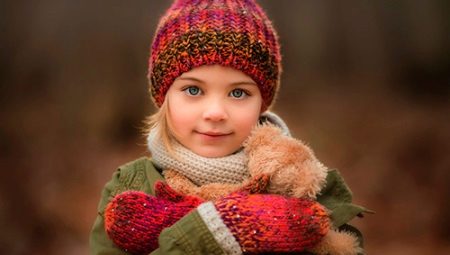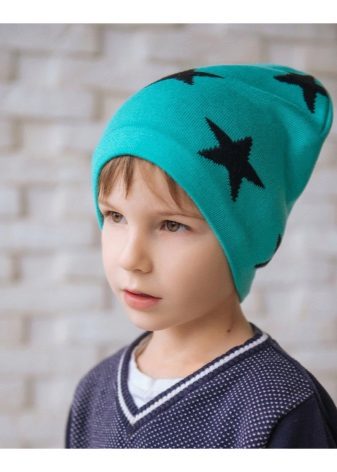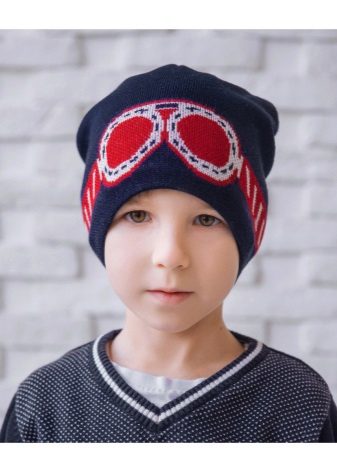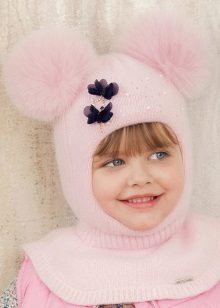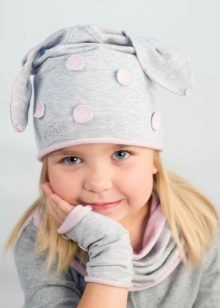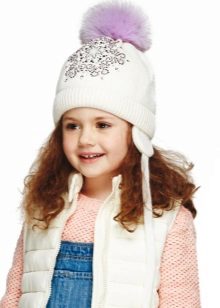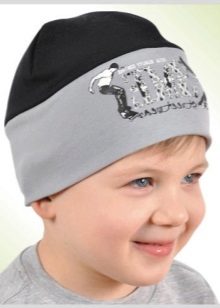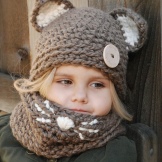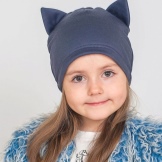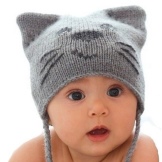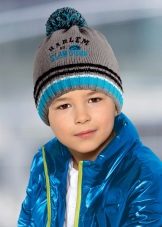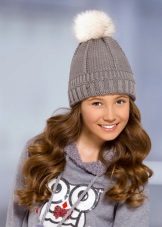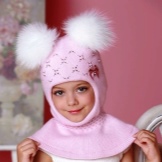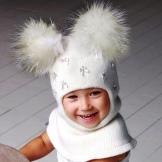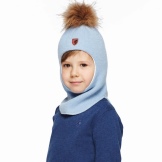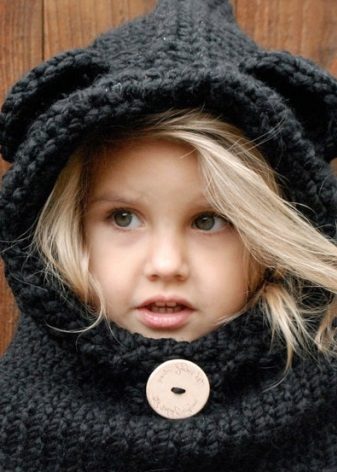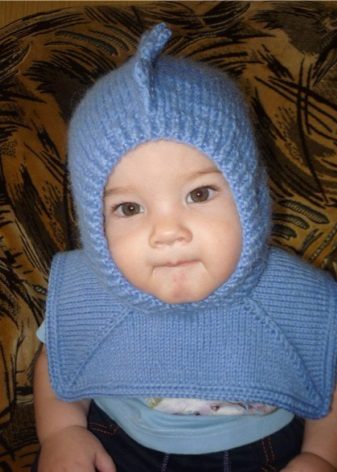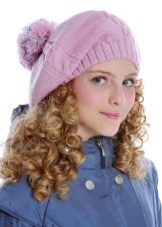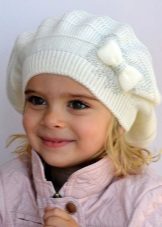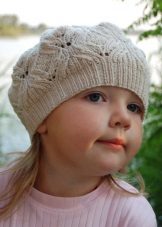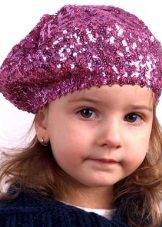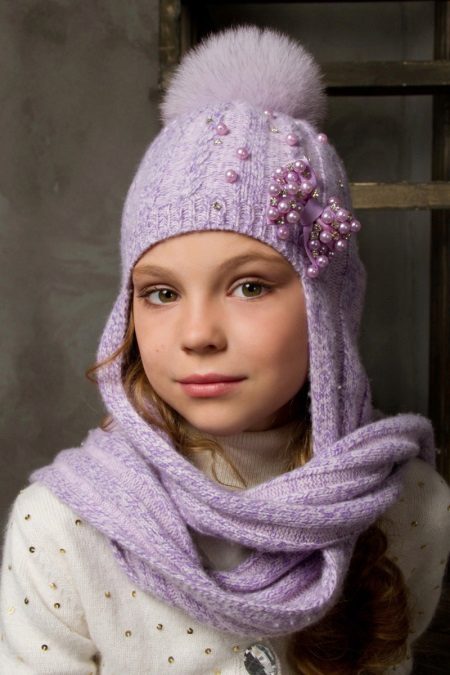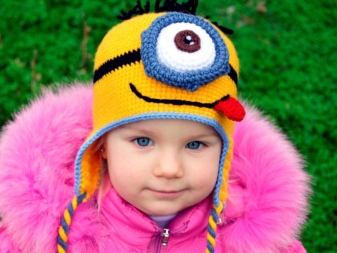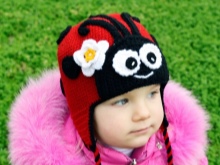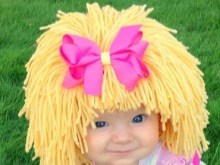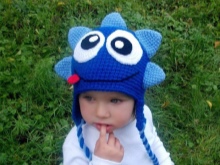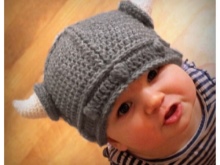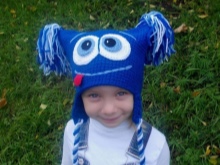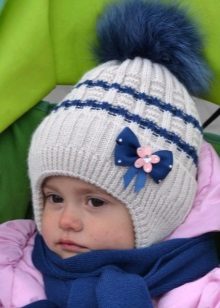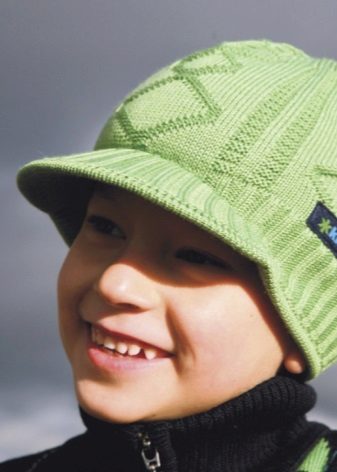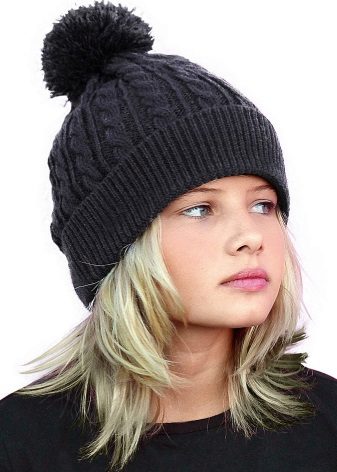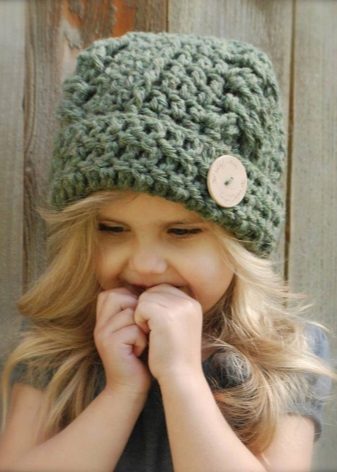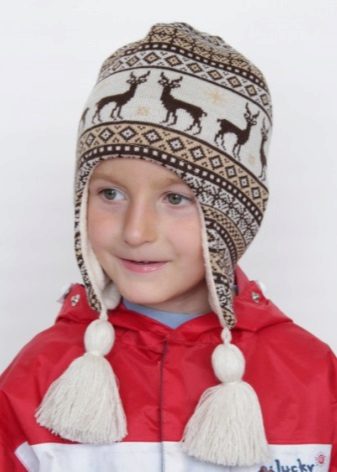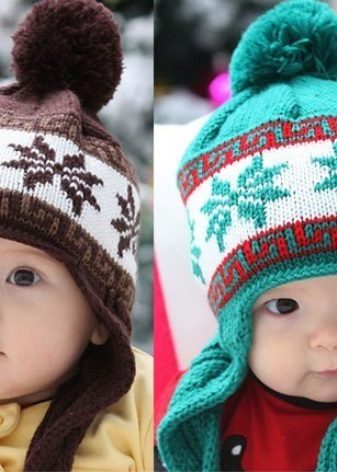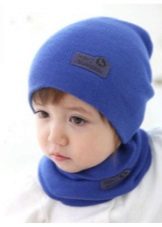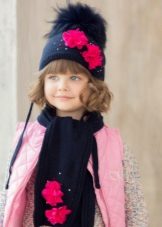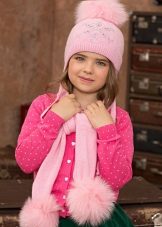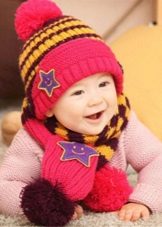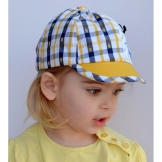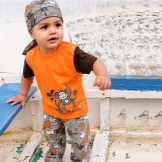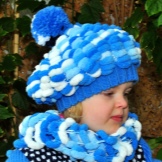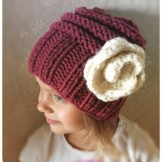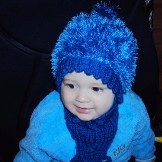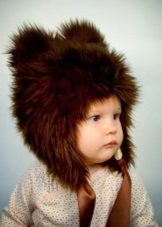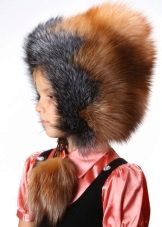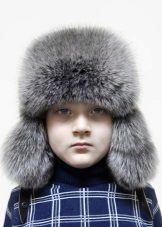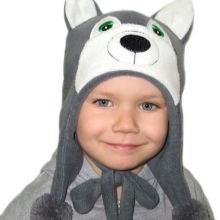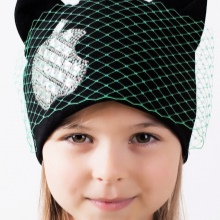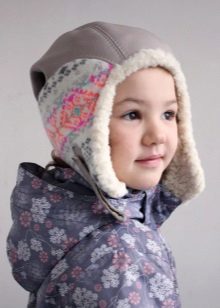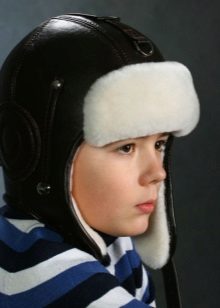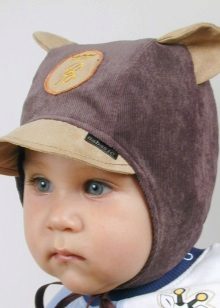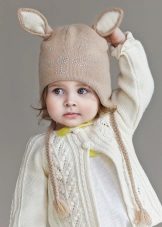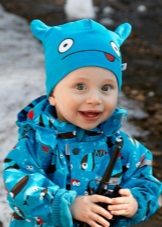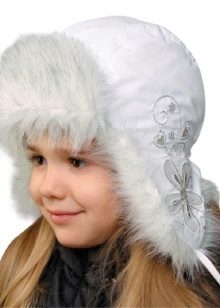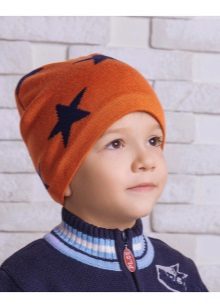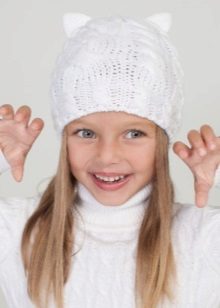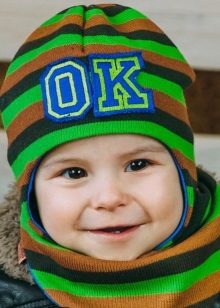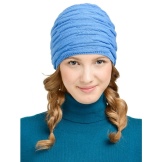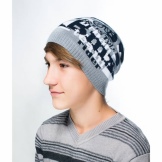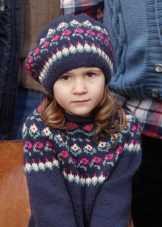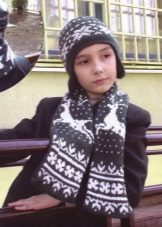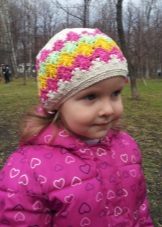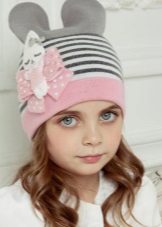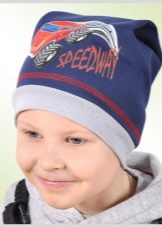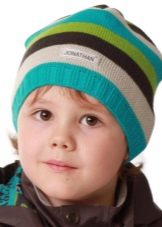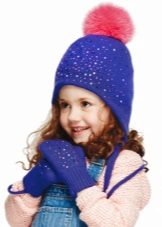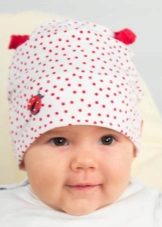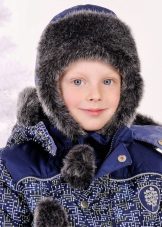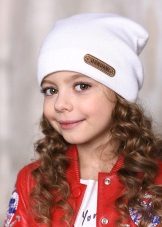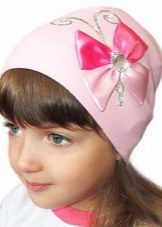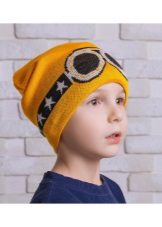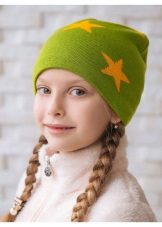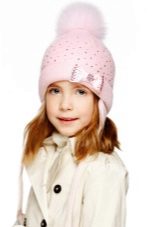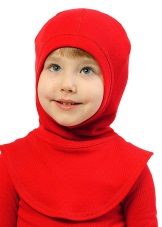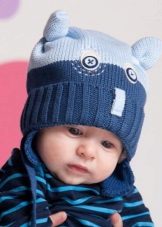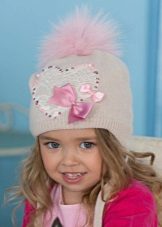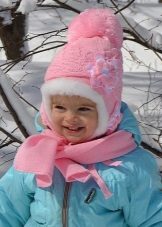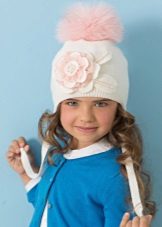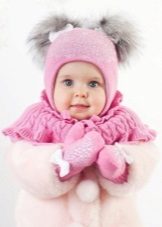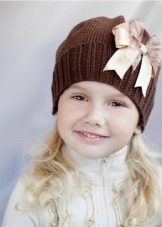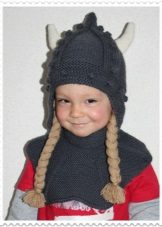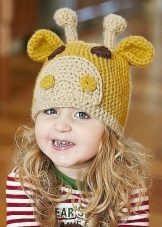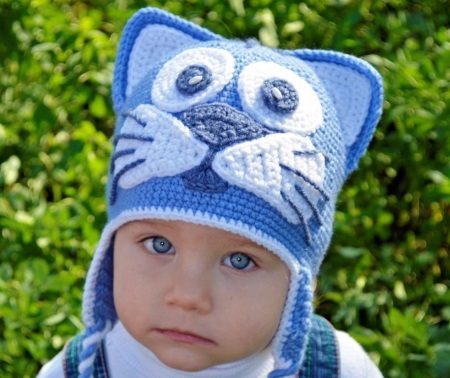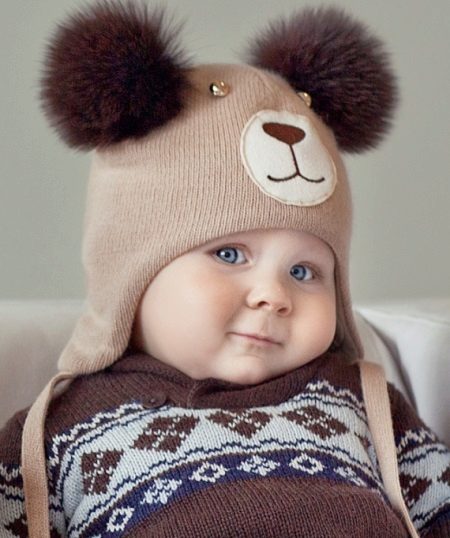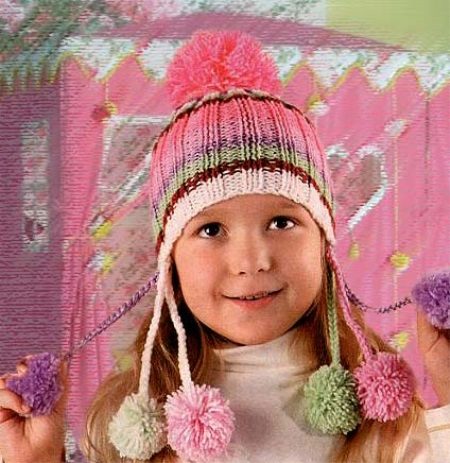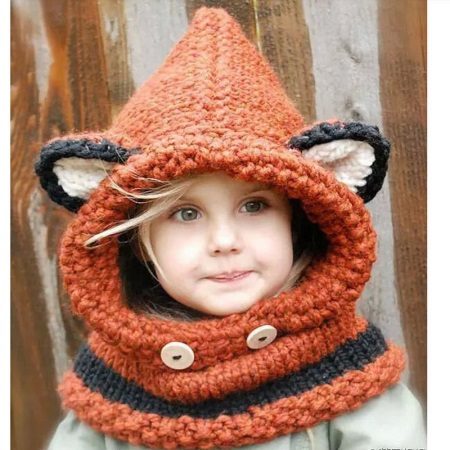Children's hat ... A phrase that causes the older generation to have a persistent association with only two or three types of these children's hats. Wool two-tone, with a toe - an autumn-spring version, on top of which in the cold season another one was worn - a round tiger or luxurious rabbit, over which an elastic band was stretched, “so as not to inflate into the ears”. There was also a “boyish” version - a hat with earflaps from the same brown tiger shirt. The children were similar to each other, but they didn’t blow their ears - that’s for sure.
The current generation of children are more fortunate modern children's hats perfectly combine beauty and originality all with the same concern for the warmth and health of babies, not quite babies and not babies at all.
Models
The range of modern children's hats is so wide that it is difficult to list all the options, but it is easy to find one that suits both the mother and her child.
-
Cap with ears. What could be nicer and more touching than a kid for a walk? Only a baby in a hat with ears - kittens, bears, frogs ... They're also kids. What can I say about the kids, if you can easily find a hat with ears on a teenage girl, and sometimes even on a completely grown up girl. For example, on Paris Hilton. Apparently, in the shower she is still a kid.
-
Hat with pompom. With big. Or with two, but small. Or even with three or four. On the top or hanging on the cord. This classic of the genre, never going out of fashion. Recently, one large fur pompom on a knitted hat has become fashionable.
-
Hat with ear flaps. In the 80s of the last century, the male model of such a cap was extremely popular with older schoolchildren, both with girls and boys. Today's earflaps are not at all like those of the gray-white rabbit. They are bright or delicate, with soft fluffy colored fur, with a top made of fabric with funny prints or even knitted.
-
Helmet. A model that combines a hat and a scarf at the same time. They are very convenient for almost independent children who attend kindergarten and dress themselves. In this hat, you can not worry about the fact that the child will forget to wear a scarf or somehow knit it incorrectly. In such a cap, providing a snug fit to the head and closed throat, you can not worry about the health of the baby. However, it should be mentioned that the children themselves do not always like this model of cap.
-
Cap-hood Infrequently occurring, but a wonderful model of children's headgear for girls. In general, a classic bonnet is a hybrid of a women's cap and hat, tied with ribbons under the chin, this option can be seen in historical ribbons. The more interesting your baby will look in this original version of the cap.
-
Beret. Knitted, felt, fleece, fur is a girl's option, both summer and for the colder season.
- Hat scarf. Not to be confused with a helmet-cap. The scarf has, as a rule, a long occipital part, which is wrapped around the neck. Of course, such a spectacular model is more suitable for older children.
-
Coolhats like the cartoon about Asterix and Obelix (in the form of a Viking helmet, with horns and braids), in the form of a gladiator's helmet (with a wide strap chin) or a knight (with a rise and fall in case of cold weather "Visor"). Funny hats in the form of animals (giraffes and bees, ants and ladybugs, cats and bunnies). Funny caps with crowns or caps that mimic tails or pigtails.
-
Double caps. Very warm, for greater confidence of parents in the safety of the precious child.
- Caps with a visor. A convenient element designed to further protect the eyes from cold wind and rain.
-
Caps with a cuff. Cute by themselves, guaranteeing even greater comfort due to the double warming of the frontal part.
-
Caps with an ornament. Just like adults, they are deservedly popular, as Norwegian jacquard or lazy patterns are strongly associated with small ones and large ones with happy new year, Christmas trees and gifts.
-
Caps complete with a scarf. One of the most sought-after species that will provide your child with warmth and comfort combined with a beautiful and stylish look.
- Panama. Lightweight summer hat with a small brim of textile or yarn.
- Cap. Headdress with a visor. One of the most popular varieties is a baseball cap.
- Bandana A scarf tied in such a way as to close the forehead. A stylish option for advanced parents and a fashionable child.
In addition, caps can be with ties, with ribbons, buttons, buttons ...
Material
For the manufacture of children's hats try to use only natural materials.
-
Yarn. An excellent and warm option at any time of the year is wool, depending on the type and thickness of the yarn. The disadvantages of wool include the possibility of discomfort when wearing (choosing a wool cap, pay attention to whether it is pricking), the possibility of an allergy in a child, the complexity of care (pure wool often quickly rolls off and sits down after washing). Alternatively, try a cap of the so-called wool mixture (wool with acrylic in equal parts). For a warmer season, knitted hats made of cotton, bamboo, grass, and boucle yarn are great for people.
-
Fur. Natural fur (rabbit, raccoon, arctic fox) is a wonderful and beautiful material for a children's hat, you just have to pay attention to the suitability of such a hat to the current weather conditions so that the child does not overheat, because sweating in a hot hat, it can catch a cold more easily. Sometimes you can find a children's knitted fur hat. This is a very interesting option, but at the same time the opposite development is possible - the child can freeze in such a model, since it is easier blown by the wind.
-
The cloth. Fleece, cotton, knitwear, jeans. They make cool caps that can be made by hand with the involvement of children as stakeholders.
Suede, leather. Basically, these materials go as top for hats with earflaps.
Artificial materials for making children's hats are not used very often, as they “breathe” poorly and do not have the best heat insulating properties.
Colour
The color of the headgear under equal other circumstances of choice must be in harmony with the rest of the clothing. Traditional colors for very young children — pink for a girl and blue for a boy — are still popular among parents, and indeed the pastel range is perfect for newborns.
Older children prefer more saturated colors: yellow, orange, bright blue, green, in which the children themselves become like bright blooming flowers. Very beautiful, but, of course, white hats are not very practical, especially fur.
Teens appreciate the right to choose their own as a type of headgear (and sometimes its very presence), and its color. In this case, a reasonable compromise between the sometimes rather contradictory requirements of an almost adult child (from acidic shades to dark monochrome tones) and parents' concern for their health is important.
Patterns
As before, knitted children's hats with patterns - intricate Aranes, elegant openwork, always fashionable jacquard, funny pictures, are very popular.Now there are a huge number of different kinds of yarn on sale, of which a unique children's hat will be guaranteed, if someone in your family knows how and loves to knit.
Well, and if nobody knits in your family, the textile industry will come to the rescue - you just have to choose the one that your child likes and allows you to be calm.
How to choose?
If earlier, buying a hat for a child, parents often had nothing to choose from, so one that fit in size was purchased, now the situation has changed dramatically. Choosing a hat for your child (or with him) you, first of all, determine the style and colorand then looking for the right size (sewing, knitting or buying).
Correct determination of the size of the children's headgear will help to avoid absolutely unnecessary trouble. - from excessive pressure on the head (in the case of too small a size) to the notorious “blowing into the ears” (if the size is defined incorrectly in a big direction). Equally important is the correct choice of the size of the cap for a newborn - if the cap is too large, then turning the head of the baby’s fabric may hamper the possibility of free breathing.
Determining the required size of a children's hat is not difficult - you only need to measure the circumference of the child’s head with a tape measure over the eyebrows, ears, grabbing the most convex occipital part. Actually, this is the size of the future cap. Nowadays, labeling by manufacturers of children's headdresses, indicating the age for which a particular product is designed, is becoming increasingly common, but these are quite average values, and it’s not a revelation to anyone that all children are different, so “we must measure”.
Unfortunately, it is not always possible to measure the cap. A child may be too small for fittings (up to a year), or a hat is bought in the absence of a child or, which is very important now, in an online store. Knowing the girth of his head, height and age, one can correlate these data with the data of standardized tables (for example, look at the seller or on the Internet) and correct them, if necessary.
-
For example, you decided to buy a hat you like your two-year-old daughter. You know the girth of her head, look at the table and determine that, most likely, she will need 49 size. However, in the same table, you can see that the data is given taking into account the average height at this age of 86-92 cm, and your baby is very tiny, and even a summer hat - then it is better to order the 48 size. If we were talking about a winter hat, then it would be possible to stop at 49, since the warmer options are better to get more free, so that it does not put pressure on the head and under it, if necessary, you can put on another one, more easy
Fashion trends
Classic variants of children's hats, of course, do not give up their stable positions, butOriginal models and colors of children's hats are gaining much popularity.
- What could be more fun than a cute baby? Only the baby in a funny hat, imitating two luxurious tails!
- To visit us looked ... giraffe? Giraffe? Giraffe? In general, the little daughter of a giraffe.
- A completely non-standard version and an interesting solution - a felted hat with fox ears and in the corresponding color range.
- And here is the terrible future Viking!
Stylish images
-
Mickey Mouse for a walk.
-
Just a cat.
-
Teddy bear with funny ears.
-
Many pompons do not happen.
-
Stylish, fashionable, noble!
-
Absolutely amazing chanterelle and no less amazing cap hood.
